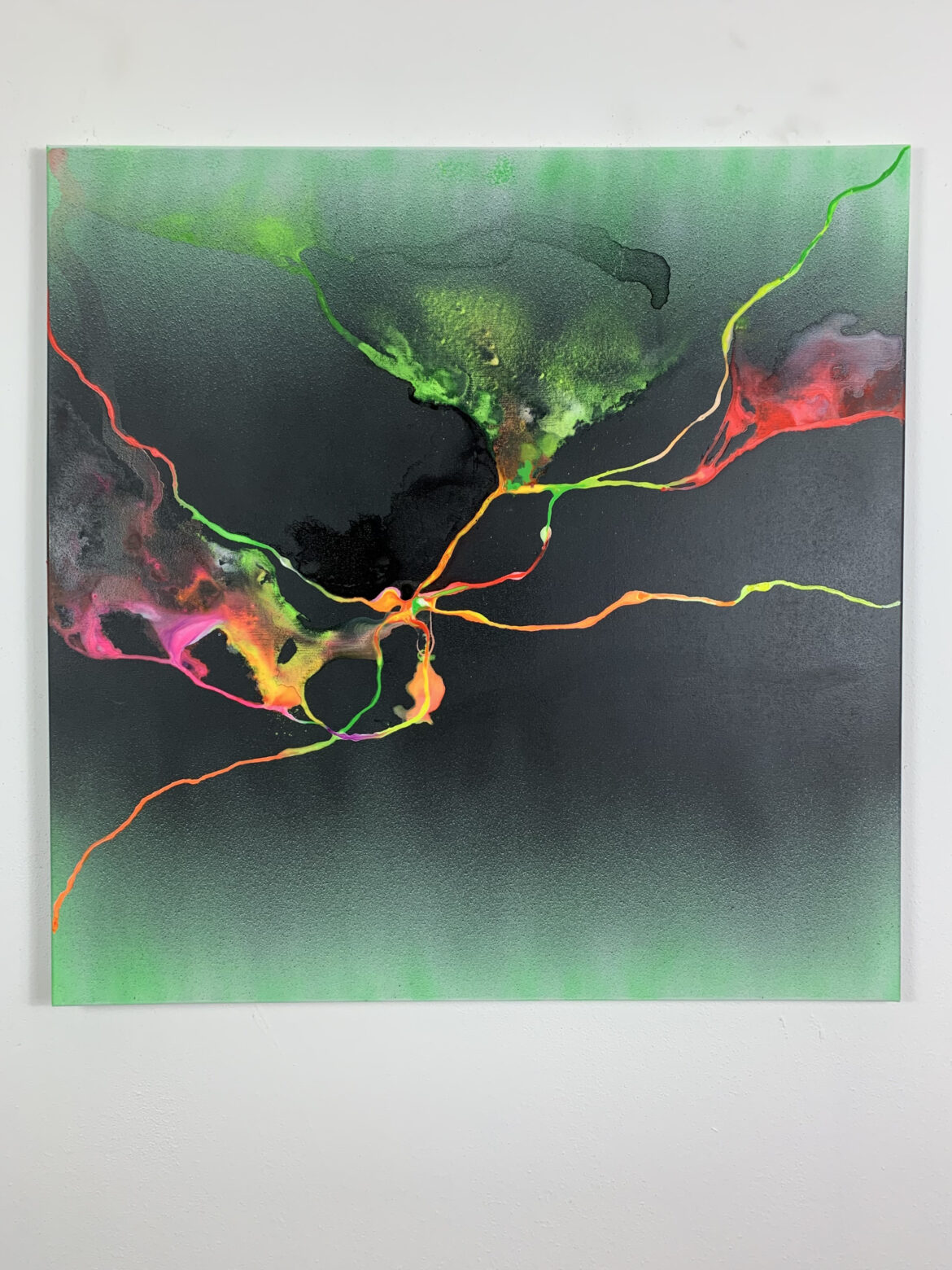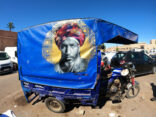Autore
- Introduction
- (In)determinate waste as social objects
- Indeterminacy as ontological condition
- Thinking with care indeterminacy 5. Conclusions
↓ download pdf
S&F_n. 31_2024
Abstract
Re-thinking with care waste: navigating the indeterminacy through feminist new materialism
The purpose of this article is to propose an onto-epistemological reflection on waste. Specifically, I examine the "indeterminate" nature of waste and the ethical-political implications of this indeterminacy. Through the lens of feminist new materialisms, I observe how indeterminacy is an ontological condition of reality and analyze its repercussions in the context of waste management and environmental conflicts.
Re-thinking with care waste Navigating the Indeterminacy Through Feminist New Materialism
- Introduction
The transition towards a circular economy model is one of the main strategies upon which Europe is investing to ensure sustainable growth and achieve climate neutrality by 2050. At the heart of this economic model lies the intention to rethink the traditional "linear" production model, based on the "extraction - production - disposal" paradigm[1]. The circular economy aims to minimise waste by transforming it into new resources for new production cycles. For architect Michael Braungart and chemist William McDonough[2], this entails adopting a different perspective on the world of material objects. Their work draws inspiration from natural regeneration processes and material flow cycles occurring in nature. According to this approach, all inputs and outputs of a production cycle are not waste but rather new resources and nutrients, both for the biosphere and the technosphere.
In place of the philosophy of cradle to grave, they propose cradle to cradle, which, at least ideally, aims to conceptually eliminate the idea of "waste". Similarly, a century ago in the Global North, a cultural paradigm based on "disposability" was becoming prevalent[3]. Around the 1930s, the concept of “planned obsolescence" began to circulate, a concept coined by American real estate entrepreneur Bernard London. According to London, to solve the Great Depression, the government should «assign a lease of life to shoes and homes and machines [...] to all products of manufacture, mining and agriculture [and] after the allotted time had expired, these things would be legally 'dead' [and] destroyed»[4].
Beyond the reformulation of economic paradigms over time, waste has an ambiguous nature because of which, according to the perceiver and context, «anything and everything can become waste, and things can simultaneously be and not be waste»[5]. The purpose of this article is to propose an onto-epistemological reflection on the indeterminate nature of waste.
In the first part, I illustrate how waste is a difficult category to determine and subject to continuous reformulations. Specifically, I intend to focus on two aspects concerning the indeterminacy of waste: the instability of waste as «social objects»[6]; their leachability and permeability which challenges the possibility of containment[7].
In the second paragraph, I delve into the unforeseen relationships that form where waste escapes containment through the lens of agential realism proposed by Karen Barad[8]. In this section, I highlight how the indeterminacy of waste can be better understood by observing how the agential and transformative capacities of matter redefine scientific definitions and waste management policies in turn. However, as Zsuzsa Gille[9] has noticed, asserting that waste has an indeterminate nature has implications for those communities fighting against the transformation of their living spaces into wastelands.
In the third paragraph, I observe how «situated knowledges»[10] and the possibility of «thinking with care»[11] about the indeterminacy of waste are tools that can: hold together multiple epistemologies[12]; produce knowledge rooted in bodies, aware of their own partiality and careful not to reproduce asymmetric and «wasting relationships»[13].
2. (In)determinate waste as social objects
In the global North, the term "waste" refers to everything that could not be utilized as a resource and has consequently been left out of the value chain. This definition encompasses not only tangible objects but also time, energy, places, and communities.
Catherine Alexander and Patrick O'Hare[14] observe that at the core of the primary classificatory order of the current bureaucratic state lies the discrimination between value and waste. However, this categorization process inevitably leaves behind wastes that do not neatly fit into this binary system. Therefore, the authors argue for the addition of a third category: the indeterminacy. This concept can be understood both as a space-time of suspension, where the determination between value and waste has not yet occurred, and as the space where places, people, and objects that disrupt this dichotomy reside.
According to this definition, "waste" and "value" would be two aspects of what Mary Douglas[15] defines as «form, whereas formlessness or indeterminacy is a third modality occupying a space between space and value»[16].
However, the authors also assert that the classification processes themselves, as a means of apprehending reality, are themselves indeterminate. Brian Wynne[17] focuses on this point and, within the distinction between hazardous waste and municipal waste, notes that the concepts of “hazard" and "waste" are not definitions based solely on certain physical properties of matter. The construction of these concepts is also influenced by economic, political, and social aspects.
For example, polychlorinated biphenyls (PCBs) are a mixture of chlorinated hydrocarbons that, starting from the 1930s, found various industrial applications. Due to their conductive and insulating properties, they were used as flame retardants, paints, and dielectric fluids in transformers, among other applications. However, between the 1970s and 1990s, they were classified as extremely toxic, and their use was drastically reduced, if not entirely discontinued. In the US, regulations concerning PCBs have established that the permitted limit of this substance in landfills is 50 ppm. In the UK, the permitted limit is no more than 10 ppm.
Another situation Wynne refers to is the discrimination between municipal waste and hazardous waste. Some products that fall under municipal and sewage waste, such as certain detergents and household products, have toxicity levels that meet or exceed the thresholds used to define hazardous waste[18]. However, for economic reasons, regulations are relaxed so as not to require municipal and sewage waste to be treated according to hazardous waste disposal processes.
These examples allow Wynne to identify two aspects through which indeterminacy manifests, both interconnected: the fact that the definition of toxicity is contingent on «institutional arrangement processes»[19], but also on scientific advancements. We do not know which new chemicals will become available for industrial use, nor which substances will be declared toxic.
Toxicity, as observed, is not something that can be properly reified and ascribed to the «bad behavior»[20] of molecules, but is defined starting from the same structures, as: «a disruption of a particular existing orders, collectives, materials and relations»[21]. Max Liboiron et al.[22] observe how "toxicity" and "harm" are categories that are not established once and for all, but are subject to continuous processes of construction, contestation, and resettlement by multiple social, political, scientific, and governmental orders.
In the field of electronic waste, the creation of regulations banning the use of certain chemical substances, as in the case of bromine-based flame retardants (HBCCD)[23], has changed the status of certain electronic waste from recyclable to waste. Similarly, technological innovation has made it possible to optimize the recovery processes of some materials, reducing waste production.
Therefore, the category of "waste" is an unstable category and, paradoxically, less materially and physically grounded than one might expect. However, Don Slater in Markets, materiality and new economy observes that in the social sciences it is important not to confuse «materiality» with «thingness»[24] concerning social objects. The «processes of materialisation» would concern the processes through which we are able «to treat things of the world as objects – durable, stable, external to individuals, with determinate properties and relations to other objects»[25]. This also implies that an object can become unstable when «the social agencies and processes that previously held an object stable – held it together as both physical entity and as meaning, inseparably – no longer do so»[26].
I believe that the social processes that keep the social object "waste" stable are continuously challenged and disrupted both by the continuous evolution of sciences and economic, political, and social parameters, and by the impossibility of materially containing and managing «the tendency of wastes to migrate and transform»[27]. Since a wide range of entities falls within the definition of "waste", indeterminacy also emerges from unforeseen relationships within a landfill, as well as from accidental oil spills at sea. However, this does not imply that the materialities of the entities that make up the waste act solely in opposition to the stabilization of a category. Instead, I believe that «processes of materialisation» should be understood as the emergence of the phenomena through «material-discursive practices»[28], where social and material agencies are co-determinants in defining waste.
In the next paragraph, I will observe how Karen Barad's agential realism is an onto-epistemology capable of holding together the diverse epistemologies that define waste and of framing the complexity of the unforeseen relationships that occur in waste management and treatment. Indeterminacy for Barad is no longer something inherently attributable to wastes but pertains to reality itself.
3. Indeterminacy as ontological condition
Mary J. Hird[29] employs Karen Barad's agential realism to frame waste as a phenomenon emerging from the intra-action of various paradigms and the materiality that composes them. The concept of “intra-action” does not merely denote an interaction between different entities but signifies a relationship that contributes to the co-creation of the entities that intra-act with one another. This implies that phenomena, agencies, do not ontologically precede the relations from which they emerge. It is a theoretical paradigm that radically rethinks the notion of causality, which Karen Barad develops based on quantum physics.
In Meeting the Universe Halfway, Barad engages with Niels Bohr's theoretical revolution, according to which quantum physics did not reveal an epistemological problem but produced a real ontological-epistemological turn. Heisenberg's model assumed that indeterminacy arises from the impossibility of simultaneously measuring the conjugate variables of a given system, for instance, the speed and position of a certain electron. In order to determine the position, the observer sends a photon that modifies the particle's speed and direction. According to Heisenberg's model, the problem is epistemological and inherent to the measuring instruments we currently possess; for Bohr, however, indeterminacy is an ontological issue: phenomena, reality as we know it, emerge from the relationship between the observer and the observed object. Bohr argues that it makes no sense to speak of separate entities with clear boundaries and defined attributes; instead, individuals «emerge through and as part of their entangled intra-relating»[30]. Measuring and defining are «agential practices, which are not simply revelatory but performative: they help constitute and are a constitutive part of what is being measured»[31]. Barad bases her agential realism on Bohr's onto-epistemological turn. The forces that contribute to materializing reality «are not only social»[32], matter is also active and contributes to materializing an open and continually becoming world.
Barad's theoretical framework outlines a relational ontology situated within a posthumanist and feminist context: the nature/culture dichotomy is profoundly challenged by the agentive and performative capacities of matter. Simultaneously, this new materialism challenges feminist epistemologies to rethink the linear cause-effect model whereby only the social informs the subjects and objects of knowledge, thereby challenging another dichotomy: subject/object, observer/observed.
Thus, the participation of matter, physical forces, and organic processes in the materialization of reality allows us to pose new questions: what contributions do matter and its processes make to power? And what elements or modes of resistance do they offer?[33] The onto-epistemological turn is also an ethical turn: knowing and doing science are relational, world-making practices.
Therefore, what does it imply to think about waste through the lens of new feminist materialisms? What ethical-political implications does it lead to? Following Karen Barad's onto-epistemological proposal, indeterminacy would not be a characteristic of waste itself but something that concerns the entire reality. Hird utilizes Barad's theoretical framework primarily for two purposes: to analyze the myriad “material-discursive practices” – epistemologies, theoretical paradigms, policies, physical and organic processes, etc. – as «agential cuts»[34] that shape the phenomenon of waste. This approach allows her to hold together multiple perspectives to observe how waste transforms over time and contexts.
Secondly, the indeterminacy of waste opens up the issue of unforeseen and undesirable relationships. Waste is not static and submissive: waste flows and mobilizes relations[35]. In this regard, Hird focuses on landfills as an example of the tension between determination and indeterminacy. The landfill is a method of waste management through containment, but it is also a space where unforeseen encounters occur. As Wynne[36] identified, landfills are sites where various materials, both hazardous and non-hazardous, mix and interact with numerous bacteria, resulting in high levels of indeterminacy. When these materials touch the ground, «they become part of bacteria’s production and consumption economy»[37].
The leachate that proliferates in landfills is the product of the metabolism of these bacteria. It is a liquid mixture that forms when water filters through solid waste in a landfill or disposal site. This liquid can contain a wide range of chemicals and contaminants, including «heavy metals, endocrine-disrupting chemicals, phthalates, herbicides, pesticides, and various gases including methane, carbon dioxide, carbon monoxide, hydrogen, oxygen, nitrogen, and hydrogen sulfide»[38]. It is not a determinable composition, as it varies depending on the materials present in the landfill. This mixture is active and, by dispersing into the soil and atmosphere, creates networks with other living beings, human and non-human: «assembles geo-bio networks»[39].
Another aspect of indeterminacy emerges from the temporality related to the containment capacities of the landfill. Hird emphasizes that even the best-designed landfills have containment times that are short compared to the geological timescales on which bacteria operate. Landfills leak and «are spaces of transformation as much as containment»[40]. The onto-epistemological indeterminacy of waste can be useful for questioning the limits of containment practices and the future consequences of this inevitable permeability and leachability. But above all, if the way we know materializes and reconfigures the world, questioning the epistemologies we use also entails addressing ethics.
For Zsusa Gille[41], the issue of ontological indeterminacy can, in practice, be a dangerous weapon for those communities living near contaminated sites. Determining and quantifying is one of the challenges and a factor of impotence for all those communities and activists struggling to recognize the exploitation and poisoning of their territory. Thus, indeterminacy can be mobilized to highlight the technical limits of the solutions adopted to contain waste and, in general, to look critically at techno-solutions concerning the climate crisis; conversely, it can also be used to «undermine the popular epidemiology practiced by victims of toxic landfills»[42]. For instance, industrial waste producers are interested in keeping the composition of their byproducts, their effects, and the actual amount produced unknown. Indeterminacy can be an instrument to appeal to a lack of scientific consensus on the risks posed by the production of certain waste and postpone hypothetical interventions to more thorough tests; or it can take the form of industrial secrecy and be employed to avoid the security risks that would result from disclosing certain technological information. Gille highlights how determination is of radical importance for effective regulation and asserts that for communities in conflict over the safeguarding of their territory, «more, not less determinacy»[43] is needed.
Although indeterminacy as a space of radical openness[44] is not immune to these exploitative maneuvers, I believe that the goal of new feminist materialisms is not to exclude determination and the possibility of knowing waste. On the contrary, new materialisms argue that «knowledge and science are relational practices with important material consequences in the shaping of possible world»[45]. This assertion is generative and implies that knowing and determining allow us to assemble new relationships with waste and/or dismantle others. The feminist ethical and onto-epistemological proposal will therefore be directed towards multiplying the ways in which we know and relate to waste, rather than excluding their determination.
In the next paragraph, I will explore the modes of knowledge we can mobilize to think-with care about waste and how these translate into ethical-political practices.
4. Thinking with care the indeterminacy
As stated above, for the relational ontologies of new feminist materialisms, knowledge and science are relational practices that materialize worlds. Maria Puig de la Bellacasa builds on Haraway's reflection and adds that «relations of thinking and knowing require care and affect how we care»[46]. But what is meant by care? And how is care related to the production of knowledge?
Bellacasa defines “care” as a non-normative and non-moralistic earthly necessity. In continuity with feminist ethics of care, she asserts that interdependence is not a moral duty but a fact of our existence as dependent and vulnerable beings. If interdependence is an ontological issue and not «an ideal contract»[47], care does not inherently pertain only to feminized subjectivities but materializes in «everything we do to maintain, advocate for, and repair our world»[48].
Thinking with care, doing science with care, implies embracing this interdependence and involvement so that indeterminacy does not turn into absolute relativism nor be dismissed by adopting a single viewpoint defined as universal. Feminist epistemologies have thus adopted situated perspectives[49], rooted in bodies, aware of their partiality, and attentive to not reproducing relationships built on axes of domination. Situating oneself within a scientific discourse means being aware of one's presence and making it explicit in the production of knowledge.
Starting from oneself, from the experience of one's body, is almost always an inevitable step for those communities living near highly polluted areas. Not only the high rates of respiratory diseases and mortality but also the experience of foul odors that force windows to be kept closed in summer become a determining factor in the processes of community activation and politicization.
In other cases, knowledge of one’s territory can make the difference in preventing foreseen tragedies, such as the disaster that affected the Vajont in 1963. The city of Longarone, along with 2,000 people, was swept away by a huge wave caused by a rockslide into the reservoir. Despite being one of the most tragic events in post-WWII Italian history, this event is not part of the national collective memory. According to Armiero, the Vajont story is one of relationships based on the exploitation of a territory and the discard of a community, aiming to transform a remote valley into a hydropower machine. To the discarding of the lives of Longarone’s inhabitants, we must add the discarding of local knowledge and the memory connected to the event. The fears reported by the inhabitants about the risks associated with the dam's construction were not heard or taken seriously: «it was a battle between scientific knowledge and professional experts on one side and lay people from an Alpine valley on the other»[50].
This event was not only silenced but its narrative was «domesticated»[51] and depoliticized: no social injustice, just a terrible tragedy. Armiero presents this event as an example of Wasteocene narratives, where Wasteocene does not refer to the “era of waste”. This term is introduced to frame waste not as things but as some of the products of the logic of discard relations: «Wasteocene is about cleanliness and aseptic environments as much as it is about griminess and contamination».[52] Thus, discard relations concern the determination of what has value and what does not, which lives are more expendable than others. Narratives and scientific discourses play a fundamental role in this process of determination.
I believe that thinking with care is a form of resistance to the production of knowledge and narratives aimed at silencing minority histories. Situated perspectives, the claim of local knowledge, and the multiplication of viewpoints can work to counteract those processes of determination and indetermination aimed at making them invisible.
An example of how indeterminacy can give rise to spaces of resistance to exploitation is the story of the lake formed near the SNIA Viscosa factory[53] in Rome, Italy. From 1923 to 1954, SNIA was a factory that had a significant impact on the health of the surrounding area. The factory was involved in the production of rayon, a synthetic fiber produced using very toxic chemicals. After being abandoned for several years, between the 1990s and 2000s, it became the subject of interest for redevelopment projects into a shopping center. Despite several movements mobilizing to defend the area, the work continued until it encountered an aquifer that began to gush and fill the excavation area. The attempt to channel the water into the sewers resulted in bursting pipes and flooding the neighborhood. The work was stopped, and the water emerging from the aquifer stabilized into a lake, designated as a natural monument and symbol of natural self-regeneration. Additionally, it became home to a varied ecosystem and an experience of park self-management by activists.
From a neo-materialist and feminist perspective, we can say that the story of the lake at the ex-SNIA responds to the question of what elements of resistance the agentive capacities of matter offer us.
- Conclusion
In this reflection, I have examined how the issue of the indeterminacy of waste is neither an epistemological problem nor an issue related to the nature of waste itself. Through the lens of new feminist materialisms, the question of indeterminacy has been identified as an ontological condition of radical openness: the world is in a state of continuous becoming, where no entity precedes its relationships. This assertion reveals its posthumanist implications and translates into the denial of any form of exceptionalism or ontological primacy. New materialisms argue that not only are bodies culturally inscribed and regulated, but matter also acts and materializes meanings.
In the context of waste, this vitality of matter and its transformative capacity translates into a technical problem of managing and containing undesirable relationships, as well as the materialization of unforeseen worlds. Throughout the article, it has been observed how indeterminacy as radical openness of matter can translate both into a generative space (such as in the case of the lake at the Ex SNIA site) and into an obstacle for environmental justice. Therefore, in the last paragraph, I have focused on the ethical implications of the onto-epistemologies proposed by feminist new materialisms. Thinking with care does not reduce indeterminacy, nor does it exclude the possibility that the lack of determination can be used to silence the voices of struggling communities. On the contrary, it harnesses the openness of indeterminacy to generate multiple voices and material-discursive practices that challenge universalizing narratives.
In conclusion, the indeterminacy of waste calls for a broader reflection on unwanted encounters, the vulnerability, and the porosity of our bodies and ecosystems. Thinking with care entails navigating the complexities of this interdependence and responding to it with responsability.
[1] E.H. Arruda, R.A. Melatto et al., Circular economy: A brief literature review, in «Sustainable Operations and Computers», 2, pp. 79-86.
[2] W. McDonough & M. Braungart, Cradle to cradle: Remaking the way we make things, North Point Press, Berkley CA 2010.
[3] M. Liboiron & J. Lepawsky, Discard studies: Wasting, systems, and power, MIT Press, Cambridge 2022.
[4] B. London, Ending the Depression through Planned Obsolescence, Pamphlet; available at https://upload.wikimedia .org/wikipedia/commons/2/27/London_(1932)_Ending_the_depression_through_planned_obsolescence.pdf.
[5] D. Slater, Markets, materiality and the ‘new economy’ in «Market Relations and the Competitive Process. New dynamics of innovation & competition», Manchester University Press, Manchester 2002, pp. 95-113.
[6] M.J. Hird, The Phenomenon of Waste-World-Making, in «Rhizomes: Cultural Studies in Emerging Knowledge», 30, 1, 2016, pp. 183-191.
[7] Ibid.
[8] K. Barad, Meeting the universe halfway: Quantum physics and the entanglement of matter and meaning, Duke University Press, Durham, North Carolina 2007.
[9] Z. Gille, Is there an emancipatory ontology of matter? A response to Myra Hird, in «Social Epistemology Review and Reply Collective», 2, 4, 2013, pp. 1-6.
[10] D. Haraway, Situated Knowledges: The Science Question in Feminism and the Privilege of Partial Perspective, in «Feminist Studies» 14, 3, 1988, pp. 575–599.
[11] M. P. de La Bellacasa, Matters of care: Speculative ethics in more than human worlds, University of Minnesota Press, Minnesota 2017.
[12] C. Alexander, C., & P. O’Hare, Waste and its disguises: Technologies of (un) knowing, in «Ethnos», 88, 2, 2023, pp. 419-443.
[13] M. Armiero, Wasteocene: Stories from the global dump, Cambridge University Press, Cambridge 2021.
[14] C. Alexander & A. Sanchez, Introduction: The values of indeterminacy, in «Indeterminacy. Waste, value, and the imagination», 7, 2018.
[15] M. Douglas, Purity and danger: An analysis of concepts of pollution and taboo, Routledge, London-New York 2003.
[16] C. Alexander & A. Sanchez, Introduction: The values of indeterminacy, cit.
[17] B. Wynne, Risk management and hazardous waste: Implementation and the dialectics of credibility, Springer, Berlin 1987.
[18] J. Lepawsky, Reassembling rubbish: Worlding electronic waste, MIT Press, Cambridge 2018.
[19] Ibid.
[20] M. Liboiron, M. Tironi, et al. Toxic politics: Acting in a permanently polluted world, in «Social studies of science», 48.3, 2018, pp. 331-349.
[21] Ibid. p. 334.
[22] Ibid.
[23] In 2013, the European Union included HBCDD in the list of chemical substances subject to restrictions under the REACH (Registration, Evaluation, Authorisation and Restriction of Chemicals) regulation, limiting its use in various products and imposing requirements for its safe management and disposal.
[24] D. Slater, Markets, materiality and the ‘new economy’, cit.
[25] Ibid., p. 96
[26] Ibid.
[27] J. Gabrys, Sink: The dirt of systems in «Environment & Planning D: Society and Space», 27, 2009, p. 668.
[28] K. Barad, Meeting the universe halfway: Quantum physics and the entanglement of matter and meaning, cit.
[29] M.J. Hird, The Phenomenon of Waste-World-Making, cit.; cf. M.J. Hird, Knowing waste: Towards an inhuman epistemology, in «Twenty-Five Years of Social Epistemology», Routledge, London-New York 2016, pp. 197-213.
[30] K. Barad, Meeting the universe halfway: Quantum physics and the entanglement of matter and meaning, cit. p. IX.
[31] Id., Chapter Twenty-Eight From What Is the Measure of Nothingness? Infinity, Virtuality, Justice (2012), in «Posthumanism in Art and Science: A Reader», Columbia University Press, New York 2020, pp. 163-172.
[32] Id., Meeting the universe halfway: Quantum physics and the entanglement of matter and meaning, cit. p. XX.
[33] S. Frost, The Implications of the New Materialisms for Feminist Epistemology, in Grasswick, H. (eds.), Feminist Epistemology and Philosophy of Science, Springer, Dordrecht 2011.
[34] K. Barad, Meeting the universe halfway: Quantum physics and the entanglement of matter and meaning, cit.
[35] M.J. Hird, Knowing waste: Towards an inhuman epistemology, cit.; cf. Z. Gille, Actor Networks, Modes of Production, and Waste Regimes: Reassembling the Macro Social, in «Environment and Planning A», 42, 2010, pp. 1049-64.
[36] B. Wynne, Risk management and hazardous waste: Implementation and the dialectics of credibility, cit.
[37] M.J. Hird, Knowing waste: Towards an inhuman epistemology, cit., p. 457.
[38] Ibid.
[39] Ibid.
[40] J. Gabrys, Sink: The dirt of systems, cit., p. 668.
[41] Z. Gille, Is there an emancipatory ontology of matter? A response to Myra Hird, in «Social Epistemology Review and Reply Collective», 2.4, 2013, pp. 1- 6.
[42] Ibid., p. 6.
[43] Ibid.
[44] K. Barad, Chapter Twenty-Eight From What Is the Measure of Nothingness? Infinity, Virtuality, Justice, cit.
[45] M.P. de La Bellacasa, Matters of care: Speculative ethics in more than human worlds, cit.
[46] Ibid., p. 69.
[47] Ibid.
[48] J. Tronto, Moral boundaries: A political argument for an ethic of care, Routledge, London 2020.
[49] D. Haraway, Situated Knowledges: The Science Question in Feminism and the Privilege of Partial Perspective, cit.
[50] M. Armiero, Wasteocene: Stories from the global dump, cit. p. 20.
[51] Ibid.
[52] Ibid., p. 10.
[53] M. Tola, The archive and the lake: Labor, toxicity, and the making of cosmopolitical commons in Rome, Italy, in «Environmental Humanities», 11, 1, 2019, pp. 194–215.








